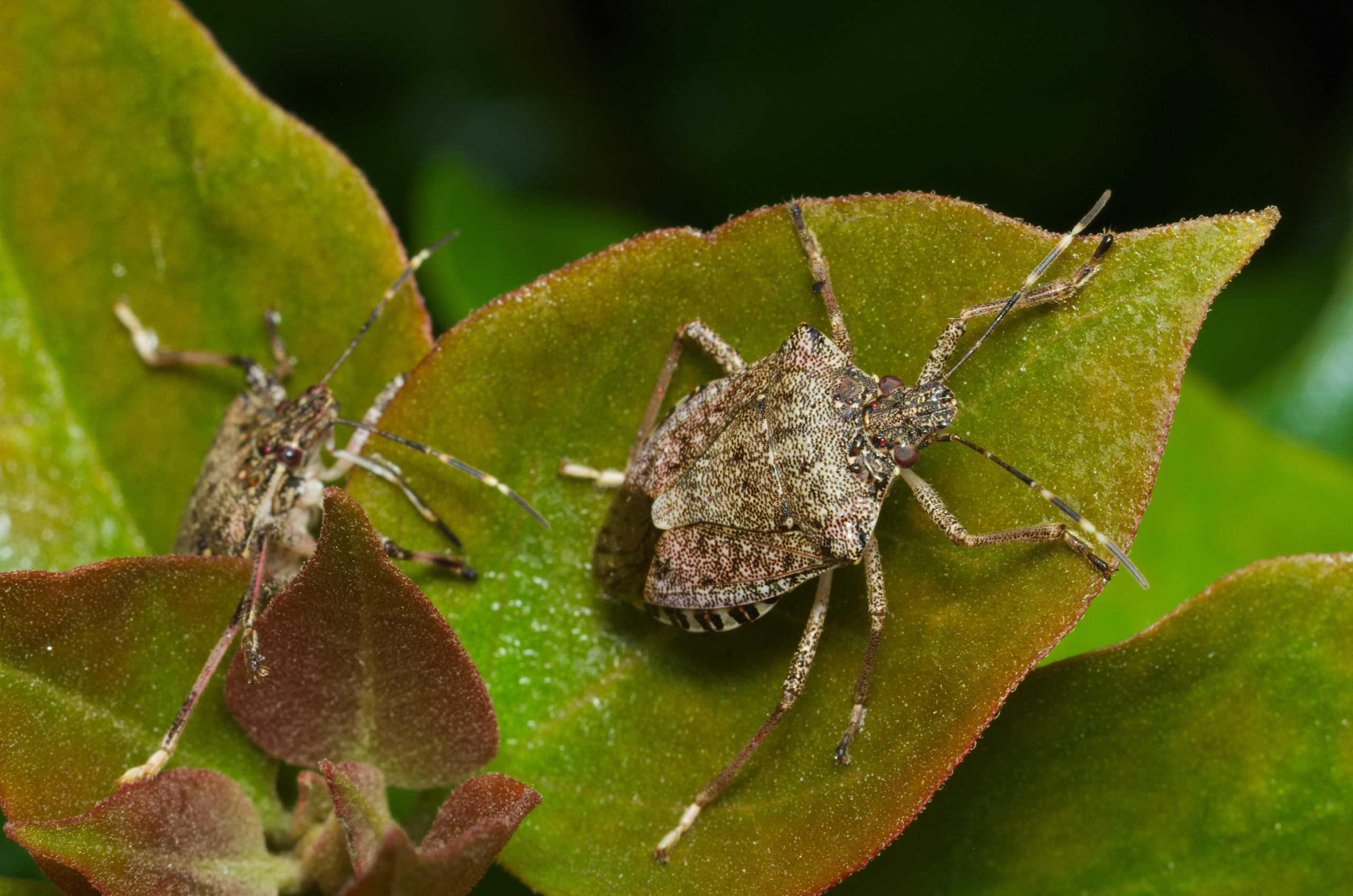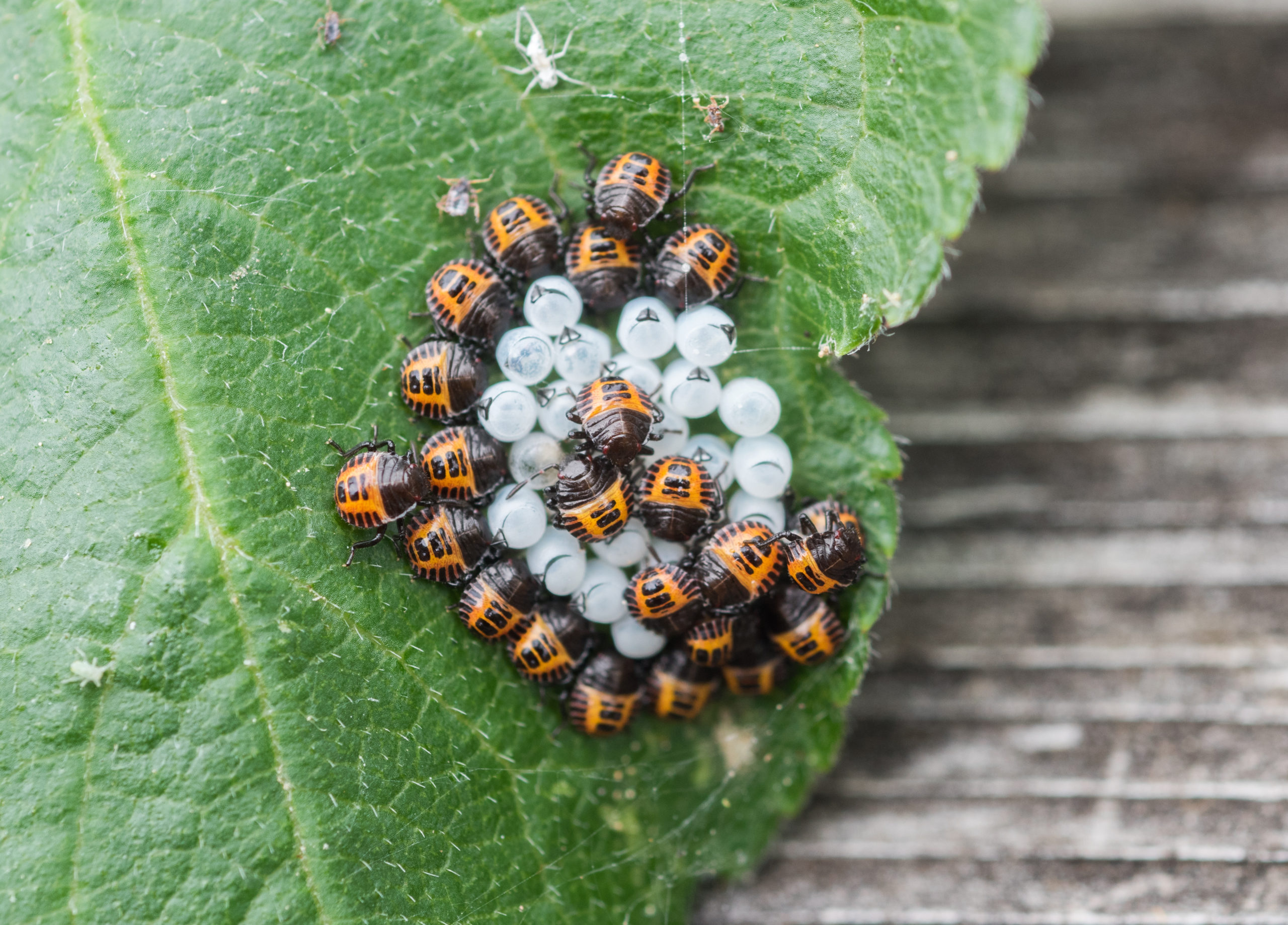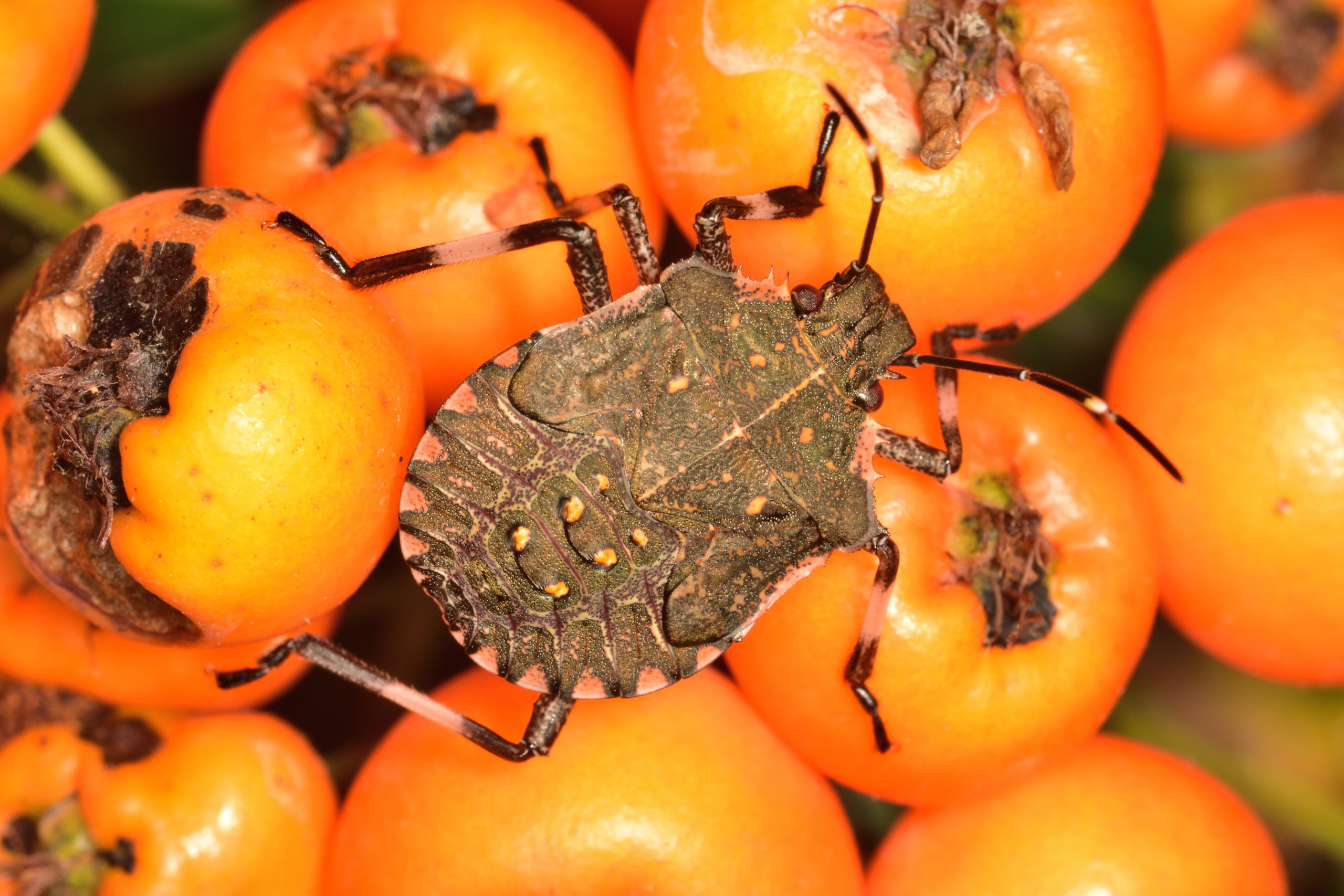What’s the Big Stink With the Brown Marmorated Stink Bug?
What’s the Big Stink With the Brown Marmorated Stink Bug?
With all of the beetles, ants, and roaches taking up space in gardens and yards across the country, it takes a lot for a pest to stand out in our minds. They really need some kind of distinct markings or special abilities for their specific name to be memorable. Case in point: the brown marmorated stink bug. You get all you need to know in its name; its color, markings, and ability are not a secret here. But even though this common pest is given away by its name, there is still the question of what they do and why they are considered pests. Let’s look at some of the basic facts of this bug and why it is an enemy of every farmer and gardener ever.
That Smelly Smell…

These stink bugs are a pretty unassuming pest from afar, but they cause plenty of trouble through their odor and eating habits. They are wide bugs that are almost shield-shaped, and have the standard six legs and two antennae of an insect. They also have metallic spots on their heads and light bands on their antennae, if you are willing to get close enough to look. The stink bugs are actually a fairly new addition to the U.S. because they were first detected in Pennsylvania in the late 1990s, and were believed to have hitched a ride on shipments from their original home in East Asia. Since then, they have spread across the country and are now a yearly pest that many gardeners and farmers dread.
Brown marmorated stink bug eggs are laid on the underside of leaves, hiding them from the watchful eyes of predators. There are about 20 to 30 eggs per batch, and there can be multiple generations born in a year if the weather is warm enough. The stink bugs will molt five times in their lives, eventually becoming an adult bug with strong wings and glands full of odorous chemicals. They like to stay outside in the spring and summer, especially the latter season when it’s warmest and the eggs are hatching, but the arrival of fall means it’s time to move. They overwinter in a sheltered environment that they seek out when it begins cooling down in September, which often means our houses if they’re in the area.
Now for the most worrisome part of their name: the “stink” part. These stink bugs have glands primarily on their abdomens that spray chemicals when the bug is threatened. The stink bugs can spray up to several inches away, so a predator doesn’t have to actually touch them to get blasted. But it’s still not a fun time to be sprayed, as the smell can linger for many hours. This is likely why the stink bug doesn’t have any specific predators; no creature wants to eat a bug that functions similarly to a skunk! Thankfully, stink bugs are much smaller and don’t smell nearly as bad as a skunk. People who have smelled the bugs’ spray say it smells like herbs or spices, mainly cilantro. If you step on a bug and start randomly smelling cilantro, it is likely a sign that a stink bug was just squished.
Soaking Up the Sun

Like we said earlier, stink bugs lay their eggs underneath plant leaves. This is not just for protection, it’s also because they stay near plants for most of their young lives. Every part of a plant is a food source for these bugs and is likely to receive at least some sunlight. Stink bugs will live anywhere that gets a lot of sun in general, as they like to be warmed at all times. They are ectothermic like any other insect, so their body temperature and energy level are affected by the outside temperature at all times. This is why you may see some stink bugs hanging out on the side of a house or building; they’re just trying to get some sun while they can!
Unfortunately, these habits make it even easier for them to be prominent garden and crop pests. Stink bugs consume a lot of our crops (that we’ll discuss next) that flourish in the summer when they are most active. The one good thing about these bugs is they don’t bite us or pose any real danger to us. Although they have sharp mouthparts, they only use them for piercing plants and fruit since they aren’t strong enough to break our skin. They also don’t carry the diseases that roaches and flies do, so we don’t have to worry about those hidden dangers. But for those who depend on healthy crops and gardens for profit and provisions, these bugs are more dreaded than we can imagine.
Eat Your Fruits!

Brown marmorated stink bugs are very unbiased herbivores, meaning they will eat just about any plant and fruit that’s available. This is great for them and essentially guarantees the survival of the species in the wild, but it’s bad news for us. The younger stink bugs get their nutrients from every part of the plant that they are on. They use their mandibles to pierce the leaf, stem, or root of the poor plant before drinking its vital juices.
Once the stink bugs become adults, they tend to stick to fruit and other crops. They will eat just about anything, but their most common targets include corn, apples, figs, citrus, apricots, peaches, corn, and soybeans. Since they’re so small, stink bugs don’t consume much of the crop before they are stopped. But that doesn’t mean the fruit or crop is salvageable. They unfortunately ruin anything they eat, since the fruit develops squishy, sunken spots and accrue tissue damage the more that they are fed upon. So if you have a garden or an orchard, these bugs are just another small pest that you need to keep an eye out for before they ruin your harvest.
Preventing the Little Stinkers

Even though brown marmorated stink bugs can’t bite us and don’t carry diseases, thankfully, they can still cause problems beyond devouring our crops. These stink bugs can cause the same allergic reactions in people as cockroaches do through their skins. If you or your family starts experiencing heightened allergy symptoms, it could be a sign of a pest invasion. And if you do come across these stink bugs, try not to touch them with your bare hands! In addition to spreading their smell to your skin, some people experience skin irritation in the spot that came in contact with the bug.
Honestly, the best way to prevent these stink bugs from invading your home is to eliminate all possible entrance points. Just like with other invading pests, it is essential to find any cracks and holes before they do. Inspect the outside of your house for any kind of crack, hole, or wood damage that would allow pests to get through. The areas around doors, windows, and pipes are the most commonly used by pest invaders. Small ones can be easily filled with caulk, and copper mesh is useful for larger holes. Also, make sure to repair any tears or holes in window screens as soon as possible. It’s great to open up the house on a temperate day, but the fun ends when pests use this as an easy access point inside. You can use extra screen material to patch up smaller holes, but it may be more efficient to replace the whole screen if there are too many.
If these insects are making a big stink of your home, then it may be time to call pest control services. It’s one thing to squish one stink bug in the garden, but it’s a whole new nightmare to have an army of stink bugs in and near the house. Some websites recommend vacuuming stink bugs up, but this may not be the best option if you value your vacuum. It won’t permanently damage it, it will just smell like stink bugs for a long time. But our pest control services can get rid of these pests without stinking up your vacuum or house! Our experienced technicians are ready to use our EPA-approved treatments to eliminate stink bugs before they set up shop in your home. Contact us today for more information on our services and how we can keep your house smelling like home, and not like those odd cilantro-forward pests.
Citations
Skvarla, M.J. (2017, March 2). Brown marmorated stink bug. PennState Extension. Available at https://extension.psu.edu/brown-marmorated-stink-bug (Accessed on July 21, 2022).
Stink bugs. (2020, September 21). National Pesticide Information Center. Retrieved on July 21, 2022, from http://npic.orst.edu/pest/stinkbug.html
Stink bugs. (n.d.). Pest World. Retrieved on July 21, 2022, from https://www.pestworld.org/pest-guide/occasional-invaders/stink-bugs/

